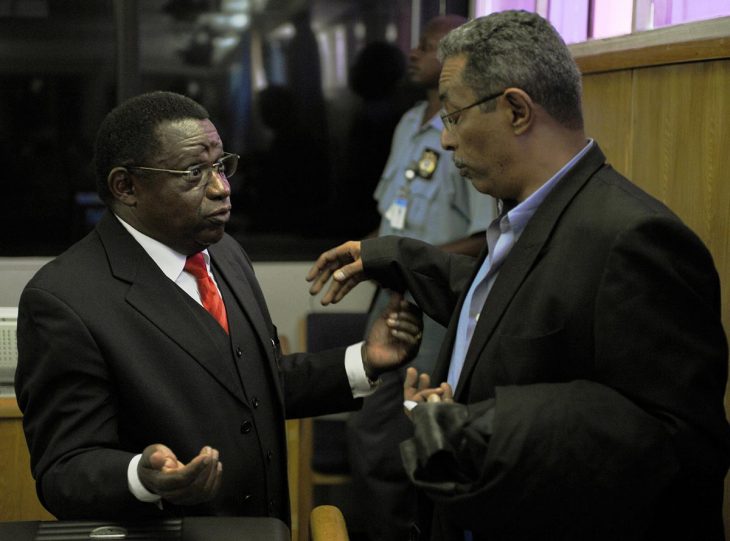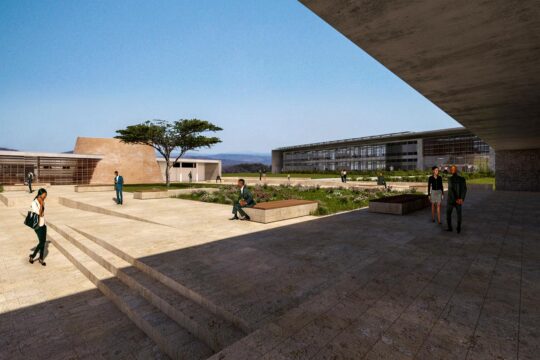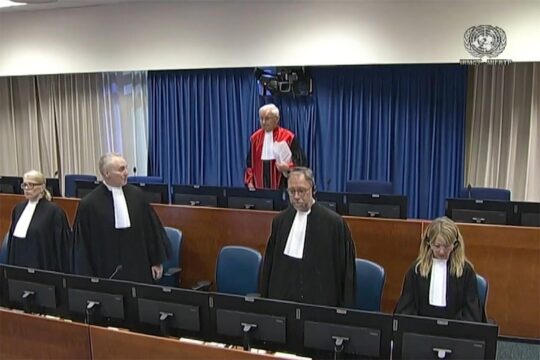Releasing them early would be like “killing us and continuing the original plan to completely wipe us out”. It would amount to “a second genocide and the promotion of genocide ideology” and “it would be like putting a knife in the wounds of the survivors.” These evocative quotes from genocide survivors are featured in a June 2018 submission by the Rwandan government to the United Nations International Residual Mechanism for Criminal Tribunals (MICT), a body that replaced the International Criminal Tribunal for Rwanda (ICTR) after its official closure in December 2015. It was filed to oppose the early release of three ICTR genocide convicts, Aloys Simba, Dominique Ntawukulilyayo and Hassan Ngeze. The prospect of these génocidaires being freed before ending their sentences prompted very loud reaction. And not just from Kigali. Some former ICTR employees, academics and NGOs also petitioned the then MICT President Theodor Meron. In strong, emotionally and morally charged language they expressed their outrage and decried “the early release of any ICTR genocide convict”.
It is not so surprising that Kigali’s reactions are charged. Claiming hundreds of thousands of lives, the 1994 genocide was a deliberate, systematic, state-led campaign aimed to destroy Rwandan Tutsis. For Kigali, only the harshest punishment for this killing frenzy’s ringleaders is satisfactory – at least when it comes to those convicted by the U.N. tribunal. Now Kigali also wants a say in determining who is to be set free, and when. These calls, however, appear to be rather belated: before Simba, Ntawukulilyayo and Ngeze, a dozen convicted génocidaires had already been released before serving their full sentences.
85% of ICTR/Y freed convicts have been granted early release
In fact, early release of international prisoners has been the standard operating procedure in international criminal justice. Already half of those convicted by the ICTR and by its sister tribunal for the former Yugoslavia (ICTY) have been released from prisons in Europe and Africa since 1999, when the first ICTY prisoner was set free. What many do not know is that the vast majority of them got out early. In total, eighty individuals convicted by the ICTY and ICTR have been released. Out of these, sixty-eight (85%) have been set free before serving their full sentence. In some ICTY cases, prominent convicts received war hero welcomes at home and their release and return was celebrated by cheering crowds and supporting state officials (see Balkan Insight). The majority, however, returned back to their countries more discreetly, or looked for a place to live elsewhere, and kept on living their lives in oblivion. Their leaving prisons went largely unnoticed, in silence, without any objection, outcry or contestation. That was also the case with Rwandan convicts, including Ferdinand Nahimana, a cofounder of the infamous Radio des Mille Collines whom Kigali considers the main ideologue and propagandist behind the genocide. He was granted early release from prison in Mali in 2016. Back then, nobody cried foul.
In this light, last year’s “outcry” against the possibility of early release of Simba, Ntawukulilyayo and Ngeze is quite unprecedented, and perhaps surprising. Yet it seems to have borne fruit. For the first time a possibility for an early release at the ICTs has made headlines in international media outlets (The New Yorker; The Guardian). It led the ICTY’s and ICTR’s political parent – the United Nations Security Council – to encourage the MICT to consider an “appropriate solution” given the concerns about “the current approach […] to early release of persons convicted by the ICTR”. As the result, in January this year, Simba was the first ICTR/Y convict to be early released under special, though quite broadly defined conditions. (In contrast, conditional early release has been applied and implemented at the Special Court for Sierra Leone.) Among others, he was asked to pledge not to “interfere in any way with the proceedings of MICT, or administration of justice”; to “conduct himself honorably and peacefully […] and not to engage in secret meetings intended to plan civil unrest or any political activities”; and not to “discuss [his] case, including any aspect of the 1994 genocide against the Tutsi in Rwanda with anyone […] nor make any statements denying the 1994 genocide.”
Low attention and vague criteria
Why the sudden change? In contrast to the meticulous regulation and high-level attention dedicated to trials and verdicts, the post-trial phase at all international criminal tribunals has been almost entirely neglected in the past. From the drafters of the ICTR’s Statute, via the judges to commentators, hardly anyone was interested in issues of incarceration, rehabilitation, release and reintegration of convicted génocidaires – or the future of acquitted suspects for that matter. It seems as if “doing justice” ended with the delivery of a verdict. The (petty) practicalities of its enforcement and the fact that it could eventually come to an end, did not seem to cause many headaches. As last year’s IMCT controversy demonstrates, they could not have been more wrong.
Despite the fact that the ICTR prisoners are serving their sentences out of the limelight – dispersed in prisons in Mali, Benin and Senegal – it is the MICT president who decides on the eligibility of prisoners for early release. In deciding, he is asked to consider four, rather cryptic factors. Besides the crimes’ gravity, the prisoner’s demonstration of rehabilitation and cooperation with the Prosecution, he takes into account the treatment of similarly situated prisoners, including those convicted at the ICTY. We have elaborated elsewhere how these vaguely defined criteria are being applied in practice, and how rehabilitation of international prisoners and early release practices at the international tribunals are not transparent. They are conceptually underdeveloped and in need of some serious thinking and adjustments. Yet, as a rule of thumb, MICT prisoners from the Balkans and Rwanda become eligible for early release after having served 2/3 of their sentence. In practice, the vast majority of those who have reached this magical threshold were indeed released.
Between 1998 and 2015, the ICTR convicted 59 former governmental and public officials, military, militiamen, journalists, clergy and businessmen for their involvement in the genocide of Rwanda’s Tutsis. By now, according to public records, seven died in detention after their verdict, while twenty-one have been set free from prisons in West Africa and Europe. Three men were released immediately after their judgment was delivered as they had already served their sentence following long pre-trial detention in Arusha. Only five served their whole sentences. While those serving the maximum life sentence are potentially also eligible for early release after serving more than 30 years, 13 ICTR convicts with lower sentences (62 % of those released) had their punishment reduced and got out early. (The proportion of those who were granted early release before serving their full sentence is even higher at the ICTY. Out of 59 individuals who are by now out of prison, 55 (93%) have been released early by the Yugoslav Tribunal.)
Early release is the rule rather than the exception
There are historical precedents for reducing sentences of mass atrocity crimes perpetrators. In post-WWII Germany, “most of the war criminals who had been sentenced before 1949 by the Allies (mainly by the Americans) were released after serving only a fraction of their sentences, with the exception of those who had been tried in the Nuremberg Tribunal,” noted German scholar Susanna Karstedt. And after a series of sentence commutations, paroles and transfers, the last Japanese war criminals convicted at the Tokyo tribunal and in various national trials were released unconditionally in December 1958.
Therefore, early release in international criminal justice has been the rule rather than the exception, irrespective of the gravity of the crimes or the lack of cooperation of the convict. In order to be eligible, according to the established ICTs’ practices, génocidaires, criminals against humanity and war criminals are only required to behave well in prison, to participate in prison activities – such as undertaking language courses, working in a kitchen brigade, or taking care of a prison garden – and to have vague plans for after their release. They are not required to reflect on the wrongfulness of their deeds or acknowledge responsibility, nor to express remorse or apologize for their crimes. In essence, they just need to serve the required part of their time, not cause any major troubles, and they are let go.
By the time Aloys Simba received the decision on his early release, he had served 2/3 of his 25-year sentence. The President of the MICT noted the seriousness of his crimes – which weighed against his early release, he wrote. But he also noted that Simba had always behaved well in prison, has good relations with his family, and is a social person. All this for President Meron demonstrated “some signs of rehabilitation”. Even though Simba feels his imprisonment unjust and continues to proclaim his innocence, he, according to the President, does not deny the existence of genocide in Rwanda and condemns the “massive slaughter that occurred.”
Calls for a change: too ad hoc, too little, too late?
There is, however, still much to debate about the way early release has been implemented at the ICTR, ICTY and MICT. The way “rehabilitation” has been applied and interpreted is highly questionable, as the Simba decision shows. As we argued elsewhere, the existing practices seem to be largely missing the point. It can be questioned whether the fact that one behaves well in prison could actually be considered any sign of rehabilitation for (high level) mass atrocity perpetrators. Especially because in ordinary, peaceful times they are very well-socialized, well-functioning individuals unlikely to misbehave.
In this sense, the recent attention stirred by Rwanda on this issue could actually be positive – at least if one remains wary of political manipulation and ad-hoc whims of certain governments which can sway the already very shaky tides of international criminal justice in one way or another. Punishment after mass atrocity crimes often disappoints and divides. And regardless whether they have a real stake in the actual trials, many feel like they should have an opinion about it. Serious thought and attention should be dedicated to the question of what rehabilitation and reintegration should mean and entail for international atrocity crime convicts. Until the international community pauses and seriously thinks about this issue, ad-hoc solutions prompted by political pressure from Kigali will not do the trick. It may even lead to arbitrary double-standards. Changing existing practices only now, when the majority of convicts is out, and potentially only for certain, selectively chosen ICTR convicts, whom Kigali considers the kingpins of the genocide, seems as an afterthought coming too late.
Irrespective of the heated reactions they spark, international criminal courts can do only as much; they hold trials, deliver verdicts, and hand out sentences. And ultimately, they can, like all other criminal courts, release convicted individuals early. This includes even those most responsible for the most serious crimes. Around this time, in early July 2019, the most famous genocide convict of the ICTR, former Colonel Théoneste Bagosora, becomes eligible under the 2/3 rule. The outrage is likely to come back if no time is spent on thinking through the rules of early release for international crimes convicts.
THE FATE OF ICTR CONVICTS WHO ARE ALREADY OUT OF PRISON
DIED WHILE SERVING THEIR SENTENCE (7):
- BARAYAGWIZA, Jean Bosco
- KALIMANZIRA, Callixte
- KAYISHEMA, Clément
- NIYITEGEKA, Eliézer
- RUTAGANDA, Georges
- SETAKO, Ephrem
- SERUGENDO, Joseph
RELEASED UPON CONVICTION, TIME SERVED (3):
- KANYABASHI, Joseph – sentenced to 20 years, the time he had spent in detention since his arrest in 1995 (full sentence served).
- NSABIMANA, Sylvain – sentenced to 18 years, the time he had spent in detention since his arrest in 1997 (full sentence served).
- NSENGIYUMVA, Anatole – sentenced to 12 years (full sentence served)
SERVED FULL SENTENCE (5):
- BIKINDI, Simon – released after serving whole sentence in 2016 - died in 2018
- IMANISHIMWE, Samuel – denied early release in 2007, released after serving whole sentence in 2009
- NZABIRINDA, Joseph – sentenced to 7 years, released after serving the whole sentence in December 2008
- NTAKIRUTIMANA, Elizaphan – sentenced 10 years, died in 2008, right around the time he had served the whole sentence.
- RUTAGANIRA, Vincent – denied early release in 2006 & 2008, released after serving the whole sentence in March 2008.
EARLY RELEASED (13):
- RUGGIU, Georges – guilty plea, denied early release in 2005, early released in 2009 by Italian authorities without the approval of the ICTR
- BAGARAGAZA, Michel - guilty plea,, early released after serving 3/4 of the sentence.
- MUVUNYI, Tharcisse – early released after serving ¾ of the sentence.
- RUGAMBARARA, Juvénal – early released after serving ¾ of the sentence.
- BISENGIMANA, Paul – early released by the MICT after 2/3 of the sentence.
- SERUSHAGO, Omar – guilty plea, denied early release in 2005, early release in 2012
- RUZINDANA, Obed – early released in 2014
- SAGAHUTU, Innocent – early released in 2014
- NTAKIRUTIMANA, Gérard – early released in 2014
- NAHIMANA, Ferdinand – early released in 2016
- NTEZIRYAYO, Alphonse – early released in 2016
- RUKUNDO, Emmanuel – early released in 2016
- SIMBA, Aloys – denied early release in 2016; conditional early released in 2019
BARBORA HOLA
 Dr. Barbora Hola is Senior Researcher at the Netherlands Institute for the Study of Crime and Law Enforcement (NSCR) and Associate Professor at Vrije Universiteit Amsterdam. She is co-director of the Center for International Criminal Justice and co-chair of the European Society of Criminology Group on Atrocity Crimes and Transitional Justice. A volume on “Perpetrators of International Crimes”, she co-edited, was just published by Oxford University Press.
Dr. Barbora Hola is Senior Researcher at the Netherlands Institute for the Study of Crime and Law Enforcement (NSCR) and Associate Professor at Vrije Universiteit Amsterdam. She is co-director of the Center for International Criminal Justice and co-chair of the European Society of Criminology Group on Atrocity Crimes and Transitional Justice. A volume on “Perpetrators of International Crimes”, she co-edited, was just published by Oxford University Press.






